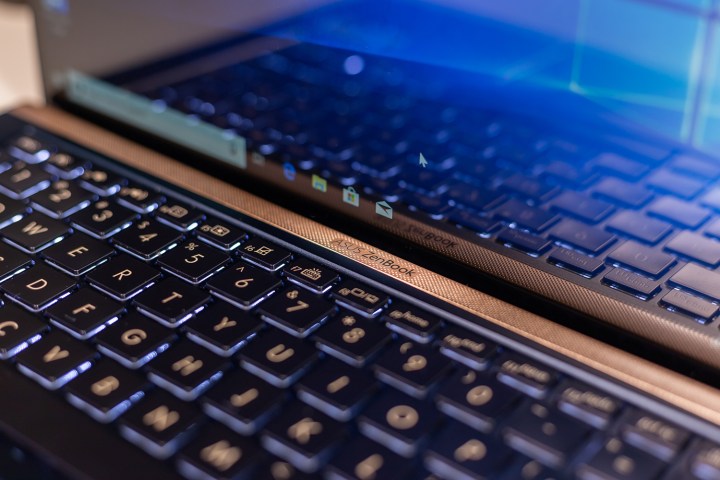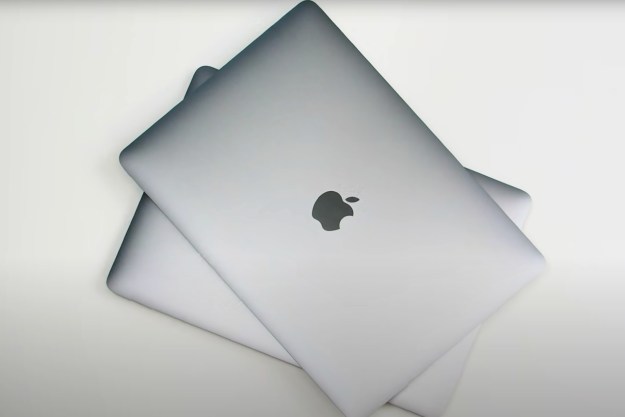The HP Envy 13 and Asus ZenBook 13 UX333 want to do the same thing: Deliver excellent performance, build quality, and battery life for around $1,000. They hit a sweet spot between price and performance, packing the specs of an ultrabook like Dell’s XPS 13 for a slightly lower price. Between them, though, which should you choose?
Asus has moved on from the ZenBook 13 UX333, focusing on newer models like the 14-inch UX425. HP, on the other hand, is sticking with the Envy 13, updating the range for 2021 with Intel’s latest mobile processors. The Envy 13 is a better option based solely on performance, but more than specs separate these two machines.
Design

When considering their aesthetics, both
The ZenBook 13 has the high-end Royal Blue color scheme with stunning gold trim and iconic ZenBook swirl on the lid that adorns its more expensive cousins. The Envy 13 is also a looker, with a choice of Natural Silver and Pale Gold colors to customize its modern chassis that’s angled in all the right places, though color upgrades are available if desired.
Design-wise, the biggest difference between these two is their relative bezel sizes. The ZenBook 13’s bezels are much smaller, falling into the “tiny bezel” category and making it thinner than the Envy 13.
The ZenBook 13 dimensions come in at 11.89 x 7.44 x 0.67 inches, while the Envy 13 is 12.07 x 7.66 x 0.67 inches. The Envy 13 isn’t exactly huge, but the ZenBook 13’s chassis is notably smaller. Both are almost equally heavy at 2.88 pounds (Envy) versus 2.62 pounds (ZenBook).
The ZenBook 13 also benefits from Asus’s commitment to build quality. Tested to MIL-STD-810g military standards for robustness, it exhibits no bending or flexing in the lid, keyboard deck, or chassis bottom. The Envy 13 has a bit more give in the lid and keyboard deck, meaning that while you won’t worry about it falling apart, it doesn’t exude quite the same confidence as the Asus model.
Input options are similar between these two
Where the
Finally, both
Performance

The ZenBook 13 comes with up to an i7-10510U processor, an eight-core part that can turbo up to 4.9GHz. Although a solid processor for a 13-inch laptop, the Envy 13 features one of Intel’s newer Tiger Lake processors — in particular, the i7-1165G7. Beyond the CPU, you can configure both
The machines split when it comes to graphics. For the ZenBook 13, you have the choice between Intel’s onboard UHD 620 graphics or Nvidia’s MX250 mobile GPU. You can configure the Envy 13 slightly higher with a Nvidia MX450, but you shouldn’t need to. The 1165G7 comes with Intel’s new Iris Xe integrated graphics. A dedicated GPU is better, but Iris Xe still provides solid performance for light gaming.
Next, the ZenBook 13 has a surprisingly good 13.3-inch IPS Full HD (1,920 x 1,080) panel with exceptional contrast at 1,360:1, higher-than-average AdobeRGB colors at 77%, and excellent color accuracy at 1.68. You don’t typically find such a good display on a budget-priced laptop.
The Envy 13 has a 4K (3,840 x 2,160) micro-edge, WLED-backlit, multi-touch option that we found to be bright and of average (but still respectable) colors and contrast. There’s also a Full HD option available for better battery life — you can’t go wrong with the displays on either of these
There’s a clear winner outside of the display, though. Almost by default, the Envy 13 is a better option. You can configure it with a slightly better GPU and it features one of Intel’s latest mobile processors.
Portability

While the ZenBook 13 is smaller than the Envy 13, it’s slightly thicker. However, neither are difficult to carry or fit into tight spaces.
The ZenBook 13 is an outstanding performer in battery thanks to its efficient CPU and Full HD display. Comparing it to the Envy 13 is difficult, however, given we tested HP’s laptop packing a power-hungry
The HP Envy 13 ekes out a win

The Envy 13 starts at $800 with an i5-1135G7, a 256GB SSD, and 16GB of
That doesn’t make too much of a difference because the Envy 13 is a better option simply because it has newer hardware, and it’s still fairly inexpensive. Asus’ ZenBook 13 UX325 — a similar, more readily available variant of the ZenBook 13 — runs $900 for an i7-1065G7, 8GB of
If you like the specs of the Envy 13 and the look of the ZenBook 13, you may want to consider the slightly larger ZenBook 14 UX435. It comes with a Tiger Lake processor and a dedicated GPU option, though it’s slightly more expensive than the Envy 13.
Editors' Recommendations
- HP Envy x360 13 vs. Dell XPS 13: the best tiny laptop?
- CES 2023: The Zenbook Pro 16X is looking like a serious MacBook Pro alternative
- Asus ZenBook S 13 Flip vs. HP Spectre x360 13.5: you can’t go wrong
- HP Envy x360 13 vs. HP Spectre x360 13
- The secondary 4K screen on the new Asus ZenBook Pro Duo can now tilt



